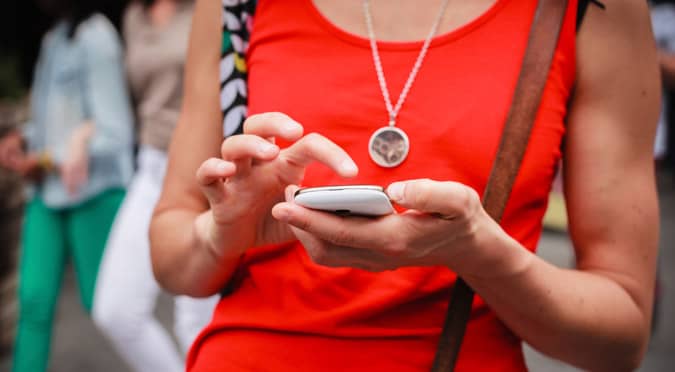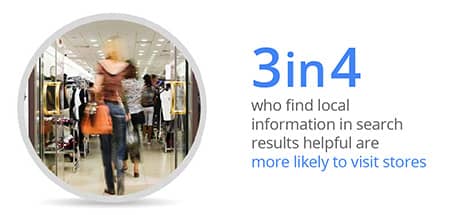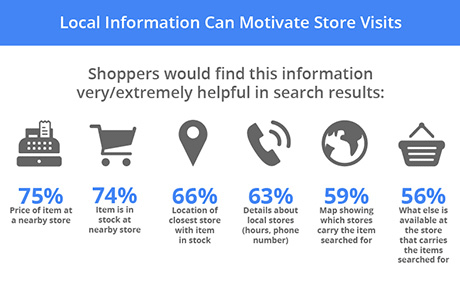Google local search drives consumers to high street stores
Research from Google investigates the impact of internet searches on high street shopping. According to their report, the retail industry is undergoing a dramatic shift: footfall is down whilst online research is up. But search results are also a powerful way to drive consumers to stores.
Three out of four shoppers who find local information in search results helpful are more likely to visit stores. Shoppers are actually inspired to visit after successfully finding out information such as the in-store availability of an item, store location, hours and pricing at a nearby shop.
The report says that digital is a powerful way to connect consumers with stores and increase footfall (or “in-store foot traffic” as they put it).
Another statistic unearthed by the researchers is that many consumers now spend more than 15 hours per week researching on their smartphones.
This change in consumer behavior is creating dramatic new realities in the world of local retail. It’s not only changing the mind-set of consumers as they walk into the store, but it’s also changing actual footfall patterns. Stores are seeing less visitors, but the people who enter are buying much more. Consumers visited less, but they were better informed about what they wanted when entering the store. Each trip was more purposeful and the stores’ sales conversions are increasing.
Sales conversion is simply the number of people who make a purchase divided by the number of people who enter the store. If 100 people visit a store, and 5 of them buy something, the conversion rate is 5%.
Obviously the first step in calculating sales conversion is to count how many people visit the store in a given time. Or, to put it another way, how many opportunities for a sale are there? Integrating people-counts with the point-of-sale (POS) system produces sales conversion figures in real-time.
Stores can further increase sales conversion rates by
- Using people count patterns to accurately schedule more staff at busy periods and generate more sales.
- Tracking the path consumers take through the store: if someone cannot find something they cannot buy it. Seeing where people go shows whether a store needs re-organising in order to increase conversion rate.
- Seeing the length of time people pause at displays and kiosks. If the display doesn’t catch their interest: change it.
- Monitoring queues: long waiting times discourage people from buying
- Finding how many people leave without buying anything and why: long queueing time, no staff available to convert the sale, poor store layout, etc.
A video people counting system gives high street retailers the tools to maximise profits.
Further Reading:
Video People Counting, Retail Sensing
The 3 New Realities of LOCAL RETAIL by Sameer Samat, October 2014
Understanding Consumers’ Local Search Behavior, Google



